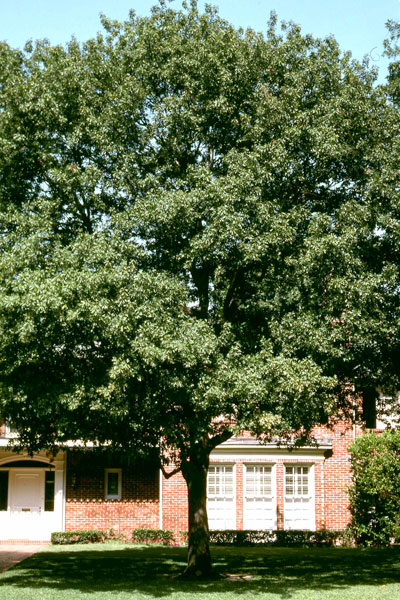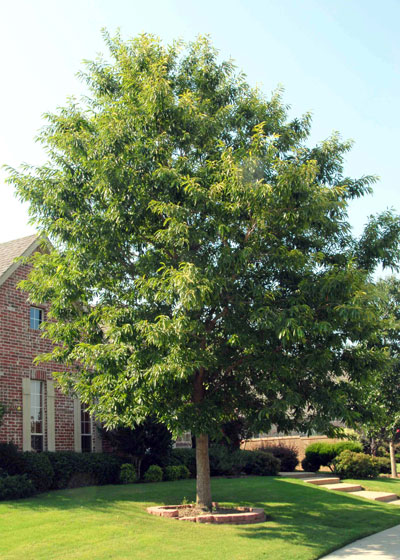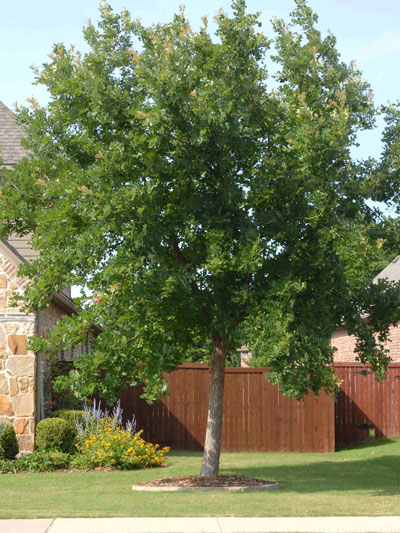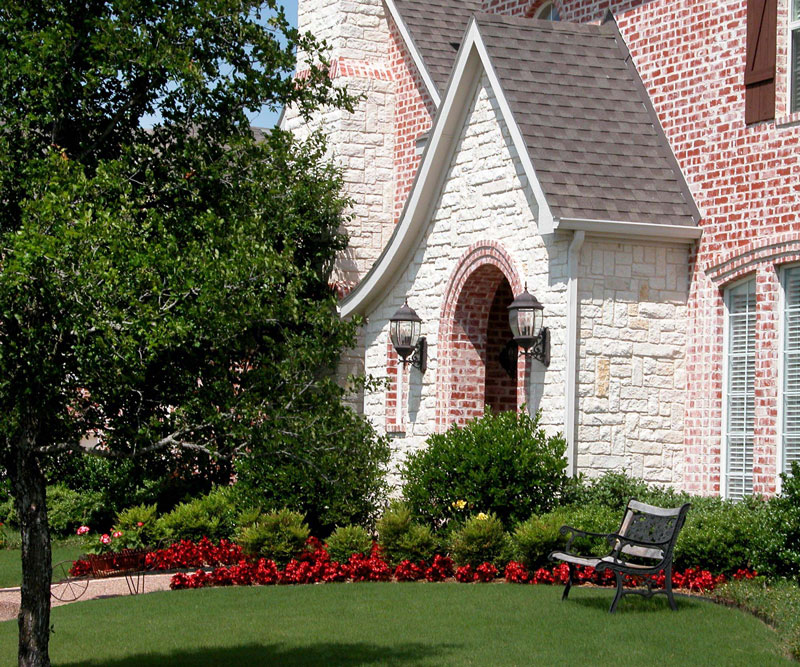If You’re Planning a New Shade Tree
I’m frequently asked to suggest the best shade trees. Often it starts with a request for “fast growth,” but I try to deflect that over to real quality and durability and that’s where these magnificent seven trees all enter the picture.

• Live oak. Native to big parts of the Texas Hill Country and South Texas, this is a magnificent, spreading tree to 50 ft. tall and 60-75 ft. wide. Evergreen. Adapted to all types of soils, both acidic and alkaline, sandy and rocky. Do note its mature size before planting it in a compact urban landscape, however.

• Shumard red oak. Native to the central corridor of Texas, this is a fabulous large, rounded shade tree to 50 ft. tall and wide. Its leaves are dark green all during the growing season, usually turning shades of red, burgundy, orange and yellow in fall. If you’re along the I-35 corridor where alkaline soils abound, be sure you’re getting a true Shumard red oak and not a pin oak hybrid. Best way to do so: buy from a full-time independent retail garden center.

• Chinquapin oak. Oval, then rounded with age. Deciduous oak native to river bottoms in eastern half of the state. Lovely and unusual tree with dark green, toothed leaves and platy, gray bark. Grows comparatively quickly as oaks go.

• Bur oak. Huge, bold-textured oak with large leaves and deeply fissured bark. Golf-ball-sized acorns. Makes a dramatic statement in landscape. Good replacement for post oaks should one of them fail. Well suited to all parts of the state. Deciduous. Matures at 50 ft. tall and wide in landscapes, but can be larger with extreme age.

• Cedar elm. Native through the central corridor of the state but suited over almost all of Texas. Upright-oval for its first 30-40 years, then rounded. Small leaves and fine textures. Deciduous. Susceptible to powdery mildew, but that’s not a threat. Mistletoe can invade, so keep it pruned out before it can establish and grow. Grows to 45 ft. tall and 40 ft. wide.

• Pecan. The biggest of the trees that I’ll mention, our State Tree grows to 60 or 70 ft. tall and wide, so it demands lots of space. Your local county Extension office or garden reference books will tell you the best varieties for your part of Texas, especially if you hope to produce your own crops of pecans. For maximum success you will have to maintain a regular spray program.

• Chinese pistachio. The one non-native tree on our “best trees” list, this one grows to be 40 ft. tall and wide. It has lovely fall color very reliably. It’s suited to almost all of Texas, and nurseries have very nice supplies at all times.
Care of new trees…
Be sure tree is planted at same depth at which it had been growing in nursery or in container. Do not pile soil or mulch up around its trunk (“mulch volcano”).
Stake and guy trees that are likely to tip out of plumb.
Wrap the trunks of trees that have thin bark – those that are notorious for developing issues of sunscald and subsequent invasion by borers. Most prone to those problems: oaks, Chinese pistachios and maples.
Water new trees deeply by hand a couple of times weekly by hand using a water wand and bubbler to keep them properly hydrated until their roots grow out into the soil adjacent to their root balls.
